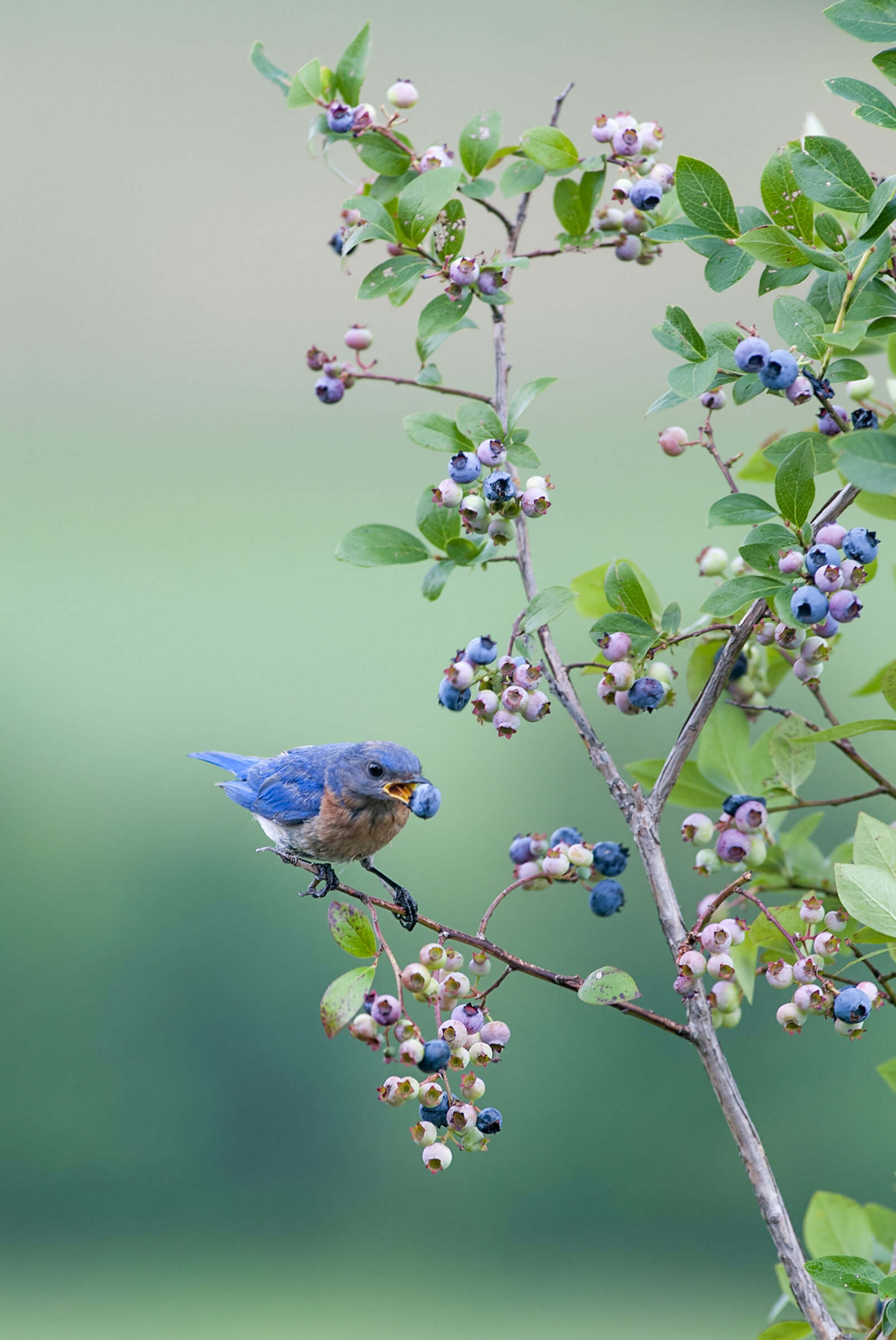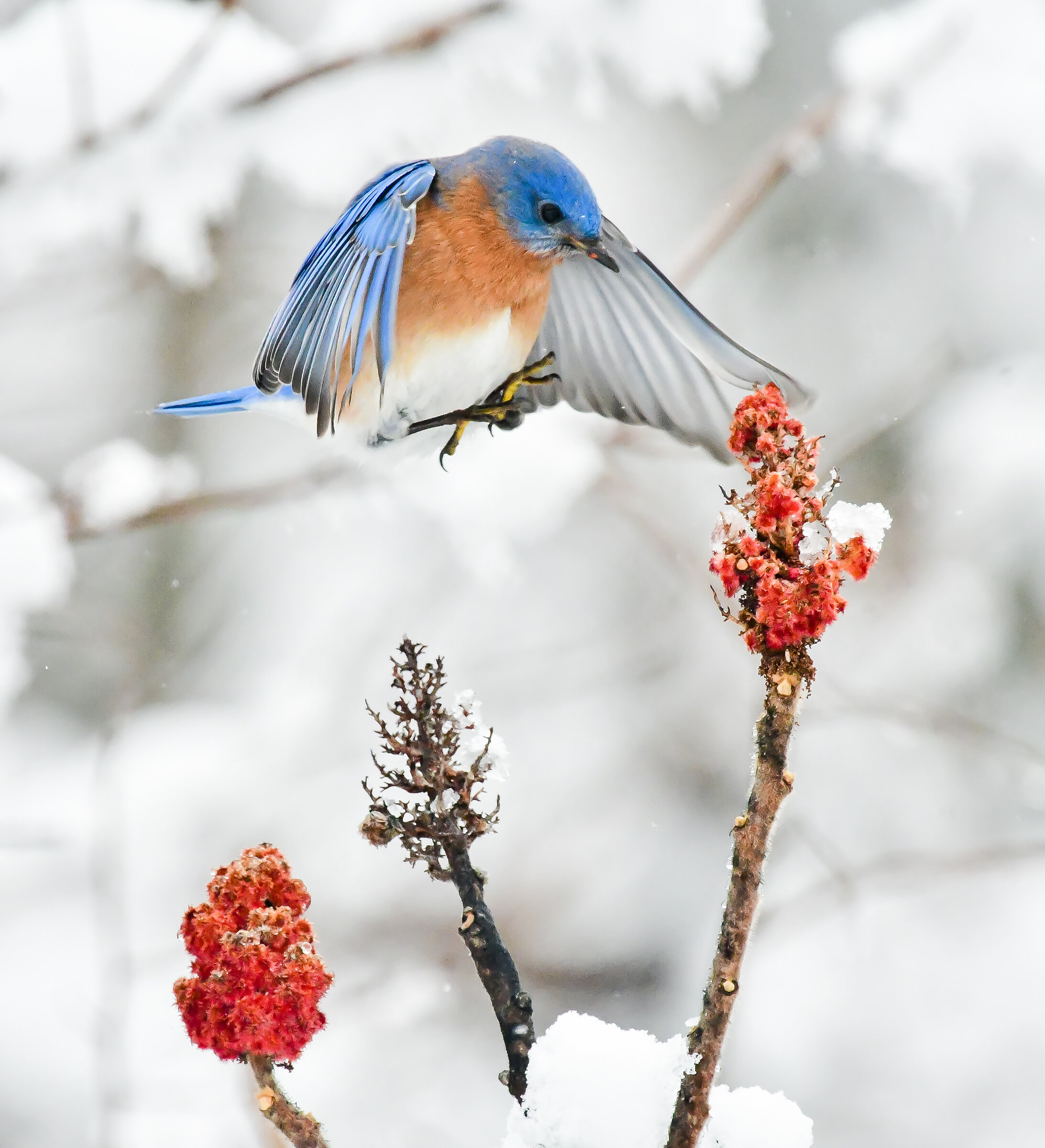Audubon at Home Sanctuary Species
Eastern Bluebird (Sialia sialis)
Eastern Bluebird - Michael Thomas/Audubon Photography Awards
The familiar blue songbird is a year-round resident from the mid-Atlantic States south to northern Florida and west to Oklahoma and eastern Texas. In the summer it ranges farther north to southern Canada. Bluebirds nest in tree cavities or nest boxes in open, often disturbed, human modified habitats, such as golf courses. In the breeding season, they hunt insects from perches over sparsely covered ground or low grass, and in the winter join mixed flocks foraging in woods and hedgerows.
To learn more about ID, range, breeding, and voice, visit Cornell’s All About Birds
| What Eastern Bluebirds Need | How Can We Help |
|---|---|
| Food and Water: During spring and summer while they are raising young, bluebirds feed on caterpillars, insects and other arthropods. They survey the ground from a perch and drop down to pick up prey. In late summer through winter, a wide variety of small fruits and berries dominate their diet. | - Install and maintain a mealworm feeder.
- Plant native fruiting trees and shrubs along field or woodland edges, including blueberry, sumac, sassafras, and pin cherry. - Avoid using pesticide on fruiting trees and shrubs and on insects near nesting bluebirds. - Provide small fence posts where bluebirds can perch to forage. |
| Shelter: Bluebirds sleep in nest cavities or on sheltered branches of trees and shrubs. | - Plant scattered native trees and shrubs near open nesting and foraging areas for them to roost in. |
| Nesting: Bluebirds are secondary cavity nesters, using woodpecker holes and other natural cavities as well as bird boxes. They will nest in a wide range of open habitats. Nests are open cups 1 to 4 inches high, made of dried grass or pine needles. Eggs (usually 4 to 6) are powdered blue color. Bluebirds can successfully nest up to three times in the Virginia Piedmont, so set up the boxes at the beginning of March and into August. | - Whenever safe to do so, leave standing dead trees (snags) to provide cavities for nesting.
Provide nest boxes 3-6 feet up on fence posts or low poles in open areas away from trees and houses.
Inside of box should be at least 4 x 4 inches wide and 8-12 inches deep, with a 1 ½ inch entrance hole.
- Monitor nest boxes at least weekly to check for predation or other problems. - For details on nest box specifications and nest box management see resources below. |
| Other Threats: European Starlings (if the nest hole is too big), House Sparrows, House Wrens, and Tree Swallows are aggressive nest site competitors and may drive bluebirds from nest boxes.
Raccoons, cats, fire ants, and snakes may kill nestlings. |
- European Starlings and House Sparrows are non-native species and should be discouraged. Remove their nests from bluebird boxes.
- House Wrens and Tree Swallows are native species and should be enjoyed. - If boxes are placed close to the woods, they may be used by chickadees, titmice, or nuthatches, all native species. - Install predator guards below nest boxes to keep climbing predators from reaching nests. - Discourage cats and raccoons by providing a 5-inch roof overhang above the nest box entrance hole or a guard around the hole. Keep cats indoors. |
Resources:
North American Bluebird Society
NestWatch, Cornell Lab of Ornithology
North American Bluebird Society on identifying nests of different bird species
Sialis helping Bluebirds and other small cavity nesters survive
Where to see Eastern Bluebirds and their Habitat:
Manassas National Battlefield State Park, Prince William
Sky Meadows State Park, Fauquier
Bristoe Station Battlefield, Prince William
Accotink Bay National Wildlife Refuge, Fairfax
Morven Park, Loudoun
Meadowood Recreation Area, Fairfax
Rappahannock County Park, Rappahannock
Find more using eBird Data: Narrow the view by entering your county in the “DATA FOR:” filter





